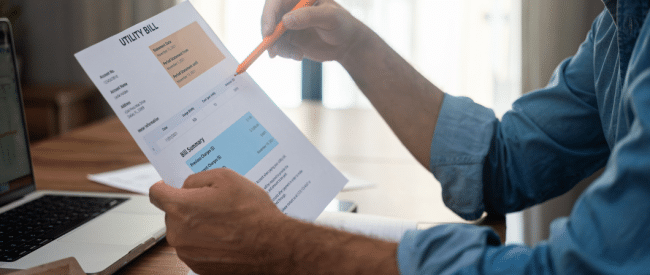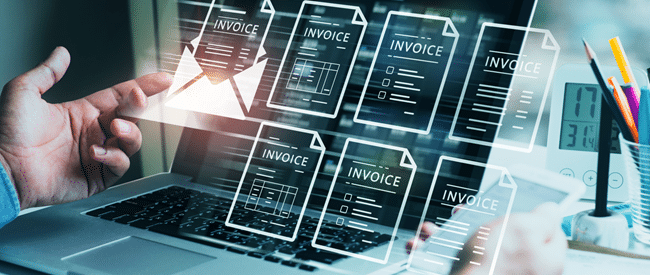Patient statement printing and mailing needs to play a critical role in improving the healthcare consumer’s financial experience to increase provider payments. But right now, it’s contributing more to escalating the problem of unpaid patient bills than solving it.
Let’s face it. Patient billing is confusing, stressful and frustrating. The current process also is increasingly ineffective, with providers collecting less and less of what patients owe.
Research by Kodiak Solutions found:
- Unpaid patient balances after insurance accounted for 53% of the estimated $17.4 billion that hospitals, health systems and medical practices wrote off as bad debts in 2023.
- Provider collection rates for balances owed by commercially insured patients in 2022 and 2023 fell to 47.6%, down from 54.8% in 2021.
Reversing this situation requires adopting new tech-enabled best practices in patient billing and payments. The focus should be on delivering simpler and more engaging financial experiences, with patient statements at the center of this transformation.
Revitalizing patient statement printing and mailing
A full 71% of providers most often rely on paper and manual processes to collect patient payments, according to J.P.Morgan/InstaMed’s 2024 Trends in Healthcare Payments report. This heavy reliance on patient statement printing and mailing is a sharp contrast to other industries, where digital communications and payments have been gaining a major hold.
Growing digital dominance reflects changing consumer behavior and expectations for what constitutes an engaging customer experience. To keep up, healthcare providers and RCM firms need to get serious about digital and mobile options, too.
Nonetheless, patient statement printing and mailing will remain the backbone of patient collections in the foreseeable future. That means providers and RCM companies must prioritize making the process more relevant and in sync with patient needs if they want to turn around dismal payment rates and expect consumers to consider digital communications.
It starts by taking advantage of technological advances in printing and cloud platforms for customer communications management (CCM) and electronic bill presentment and payments (EBPP) to not only simplify and personalize patient financial experiences but to modernize billing and payment processes so they are streamlined, automated and efficient.
By making it easy, fast and convenient to pay medical bills, both patients and providers benefit. As the linchpin in the process, here are some important steps to take to increase success with patient statement printing and mailing:
1. Improve statement design.
The goal is to create medical bills that make it simple for patients to find and understand the information they need and to take action. A statement that uses different colors, fonts, boxed content, graphics and other visually appealing techniques can highlight key information. Reducing clutter also increases understanding. These enhancements can prompt action, by directing the patient’s eye to phone, digital and print/mail payment options.
State-of-the-art printers and inserters can print and insert statements with customized colors, images, logos and content without investing in pre-printed custom shells. Continuous roll-fed printers provide dynamic variable color and perforating, automatically adjusting for each page and statement, including different-sized remittance coupons for different healthcare providers.
2. Consolidate charges.
One of the most dread-inducing and maddening aspects of the patient financial experience is the trickle of bills from the hospital, outpatient center, physician, anesthesiologist, radiologist, ambulance service and others that cover a single episode of care. They arrive over weeks or months, with little explanation and no information about how many bills in total to expect. Patients think they’ve paid what they owe, but more bills keep appearing.
Instead, providers and RCM firms should leverage cloud CCM platforms to eliminate this pain point for patients. They can use APIs and other integrations to connect and extract pertinent data from RCM systems to enable sending a single bill that consolidates all medical services, fees and patient balances after insurance across a health system. The bill should include a detailed breakdown of services, charges and insurance payments.
_______________________________________________
For more tips on patient billing, check our our white paper:
Making Medical Bills a Higher Payment Priority for Consumers
_______________________________________________
3. Include financial assistance.
Many revenue cycle leaders have seen great success by offering rules-driven payment plans, patient financing and other financial help, including charity care, as part of the initial medical bill. It lowers barriers to payment while increasing patient satisfaction.
One company analyzes more than 200 data points to determine each patient’s capacity-to-pay and, when appropriate, adds a financing option. As many as 35% of patients that receive bills with financing offers set up interest-free payment plans, with some selecting terms of only three months.
4. Integrate patient statements with digital payments.
Even if consumers prefer paper statements by mail, many have migrated to paying at least some bills online. The patient statement printing and mailing process can deliver the best of both worlds by prominently displaying directions to digital payment portals and/or adding QR codes that consumers scan to reach a secure online payment site. Not only does this approach enhance customer experience, but digital payments are faster, accelerating provider revenue.
Some EBPP systems also enable patients to set up payment plans, based on each provider’s policies, terms and qualifying criteria, and to automate recurring payments.
Combining CCM platforms with electronic bill presentment and payment systems also simplifies managing the entire billing and payments cycle. Convergent Revenue Cycle Management and Sutherland Healthcare are realizing major benefits from this integration including:
- Increased cash flow and cost savings
- Stronger data security
- Better patient experience
5. Leverage automation.
CCM platforms are the foundation for improving patient statement printing and mailing by giving providers and RCM companies the control and agility to create and update documents as needed.
Here’s how it works: The communication templates in the CCM platforms are associated with business rules and a content library that includes text blocks, images, logos and more. Healthcare billers simply upload a single data file, and the system draws content from the library and dynamically merges all elements into the set fields in the statement template to personalize each communication in preparation for printing and mailing.
In addition, healthcare organizations can use CCM automation to:
- Include appropriate disclosures based on zip codes or other criteria
- Archive records
- Create audit trails
- Track KPIs
- Generate reports
This feedback creates a virtuous loop allowing providers and RCM firms to revise and refine patient statements to improve engagement and drive payments.
6. Optimize printing and mailing services.
Postal costs are rising fast, pushing up costs for patient statement printing and mailing. With twice-annual increases starting in 2020, first-class prices have surged from 55 cents to 73 cents per ounce as of July 2024.
Working with a leading print and mail provider, healthcare billers and RCM firms can pursue an array of cost-saving measures such as:
- Opt for double-sided printing. Sending more than seven sheets of paper in an envelope results in an oversized letter and extra charges.
- Segment mailings to reduce postage costs. While billing statements and other financial documents with recipient-specific information must be sent first-class mail, letters and notices that only contain generic information can be sent as standard mail at significantly reduced postal rates.
- Use commingling. Commingling allows print and mail outsourcing providers to combine mail from multiple companies to meet the USPS’ postage discount minimums for quantity.
- Leverage services for verifying and correcting delivery addresses to minimize return mail, including running them through USPS databases National Change of Address (NCOA), Coding Accuracy Support System (CASS™) and Delivery Point Validation (DPV).
Healthcare is facing two hard truths: 1) It is largely dependent on patient statement printing and mailing for billing and payments and 2) This chief conduit for delivering financial experiences is racking up an increasingly poor track record in driving patient payments. These circumstances are adding more financial strain to providers already struggling with thin margins, rising costs and revenue challenges.
To relieve this pressure, healthcare needs to remake patient statement printing and mailing along with the rest of billing and payments, automating and reducing costs in the process. Simplifying the patient financial experience at every step is key to better meeting consumer needs and expectations and driving better payment outcomes.
Let’s discuss how we can help you improve your patient statement printing and mailing. Contact us.







